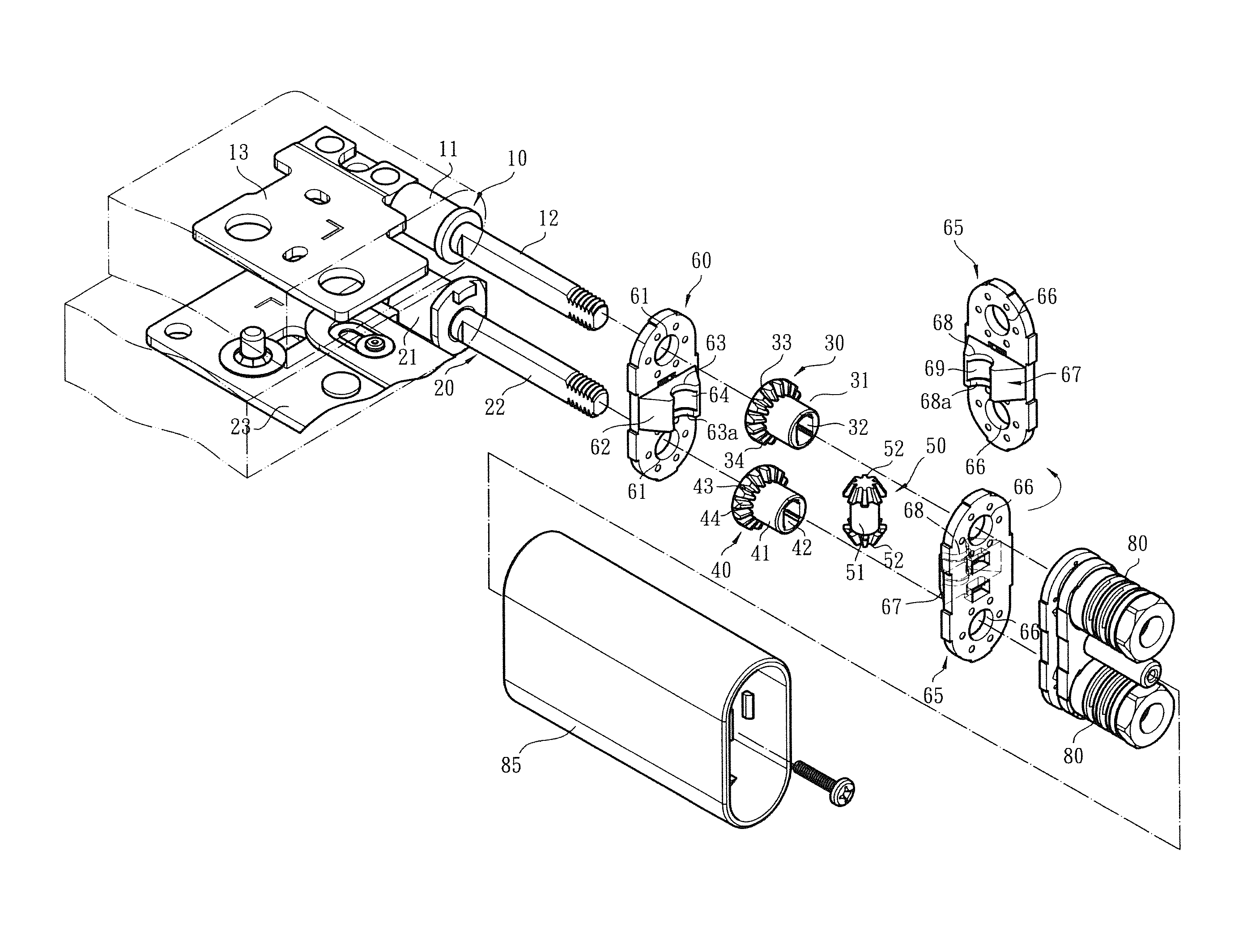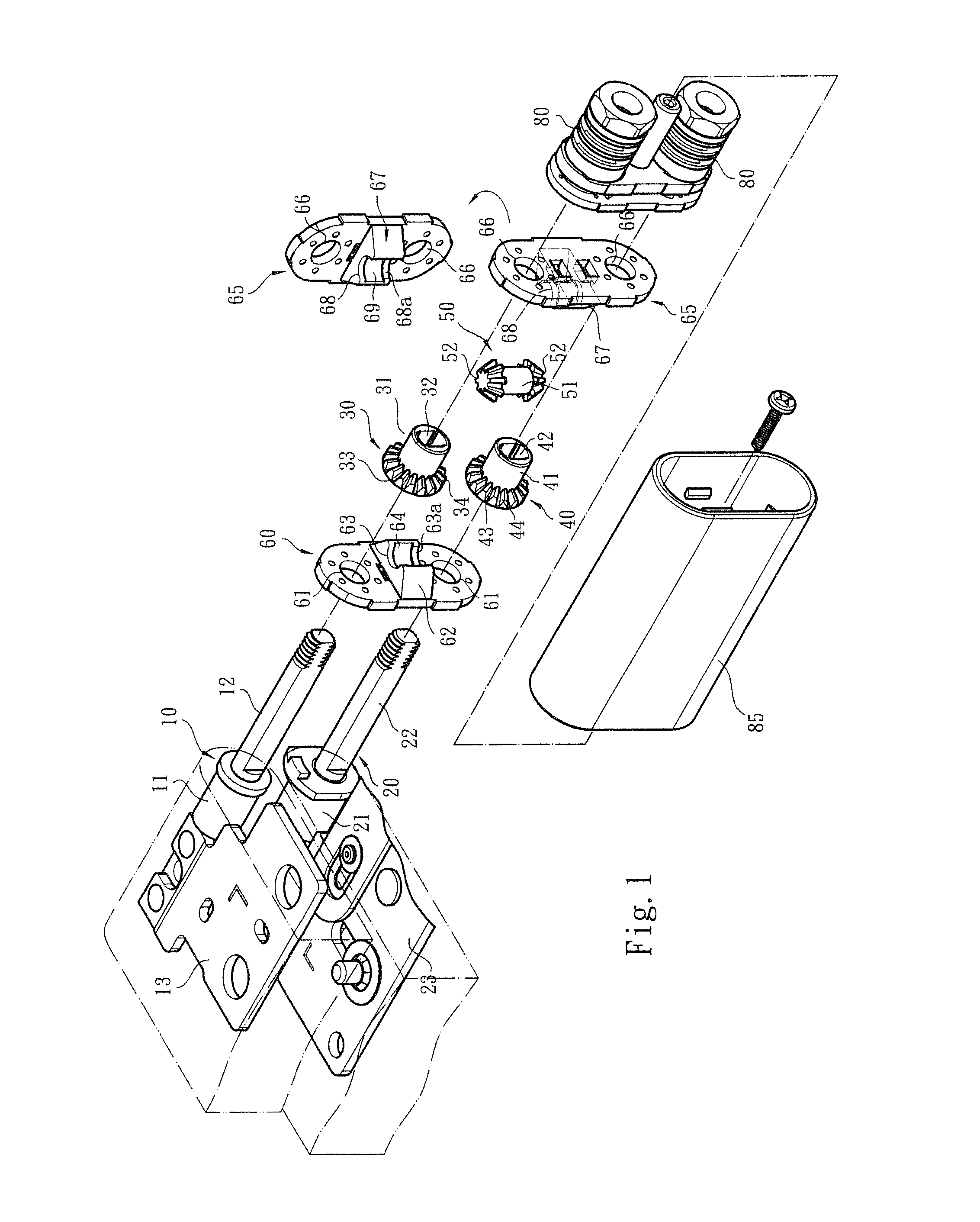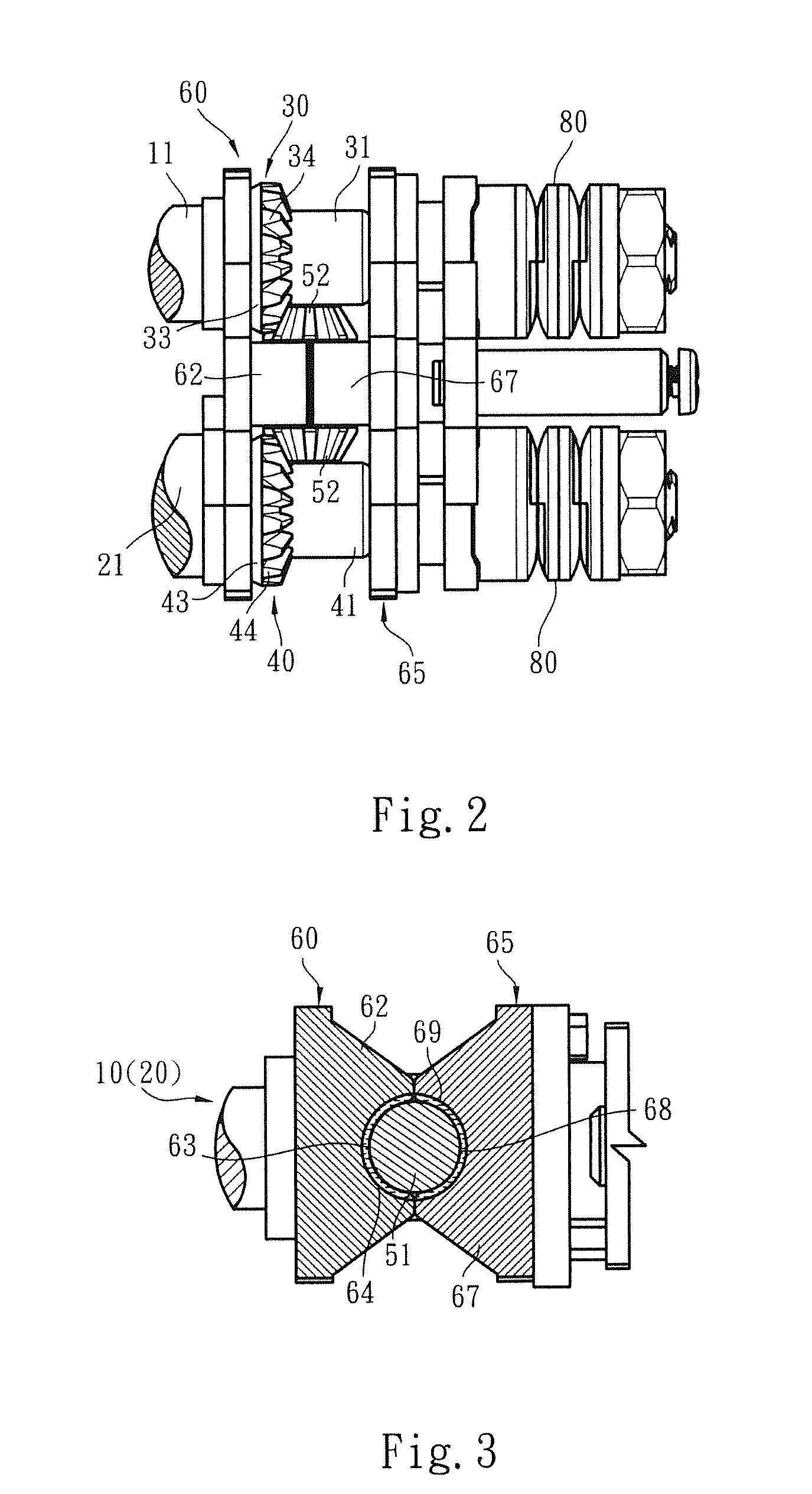Dual-shaft synchronous transmission fixing device
a synchronous transmission and fixing device technology, applied in the direction of instruments, door/window fittings, constructions, etc., can solve the problems of untrue operation, rollers and wires (or transmission belts) slipping or untrue operation, and increase the manufacturing cost, so as to enhance the smooth rotation of the link unit, the effect of reducing the volume and simplifying the structur
- Summary
- Abstract
- Description
- Claims
- Application Information
AI Technical Summary
Benefits of technology
Problems solved by technology
Method used
Image
Examples
Embodiment Construction
[0020]Please refer to FIGS. 1, 2 and 3. The dual-shaft synchronous transmission fixing device of the present invention includes a first shaft 10 and a second shaft 20. Each of the first and second shafts 10, 20 has a fixed section 11, 21 and a pivoted section 12, 22. The fixed sections 11, 21 are assembled with fixing seats 13, 23 to respectively fix the first and second shafts 10, 20 on a display module 91 and an apparatus body module 92 of an electronic apparatus 90 (such as a mobile phone, a computer or the like). The pivoted sections 12, 22 of the first and second shafts 12, 22 are (respectively) assembled with torque modules 80. Accordingly, when the action force applied to the display module 91 or the apparatus body module 92 by a user for rotating the same disappears, the display module 91 and the apparatus body module 92 are immediately located.
[0021]As shown in FIGS. 1, 2 and 3, a synchronous transmission device and a fixing device assembled with the synchronous transmissio...
PUM
 Login to View More
Login to View More Abstract
Description
Claims
Application Information
 Login to View More
Login to View More - R&D
- Intellectual Property
- Life Sciences
- Materials
- Tech Scout
- Unparalleled Data Quality
- Higher Quality Content
- 60% Fewer Hallucinations
Browse by: Latest US Patents, China's latest patents, Technical Efficacy Thesaurus, Application Domain, Technology Topic, Popular Technical Reports.
© 2025 PatSnap. All rights reserved.Legal|Privacy policy|Modern Slavery Act Transparency Statement|Sitemap|About US| Contact US: help@patsnap.com



